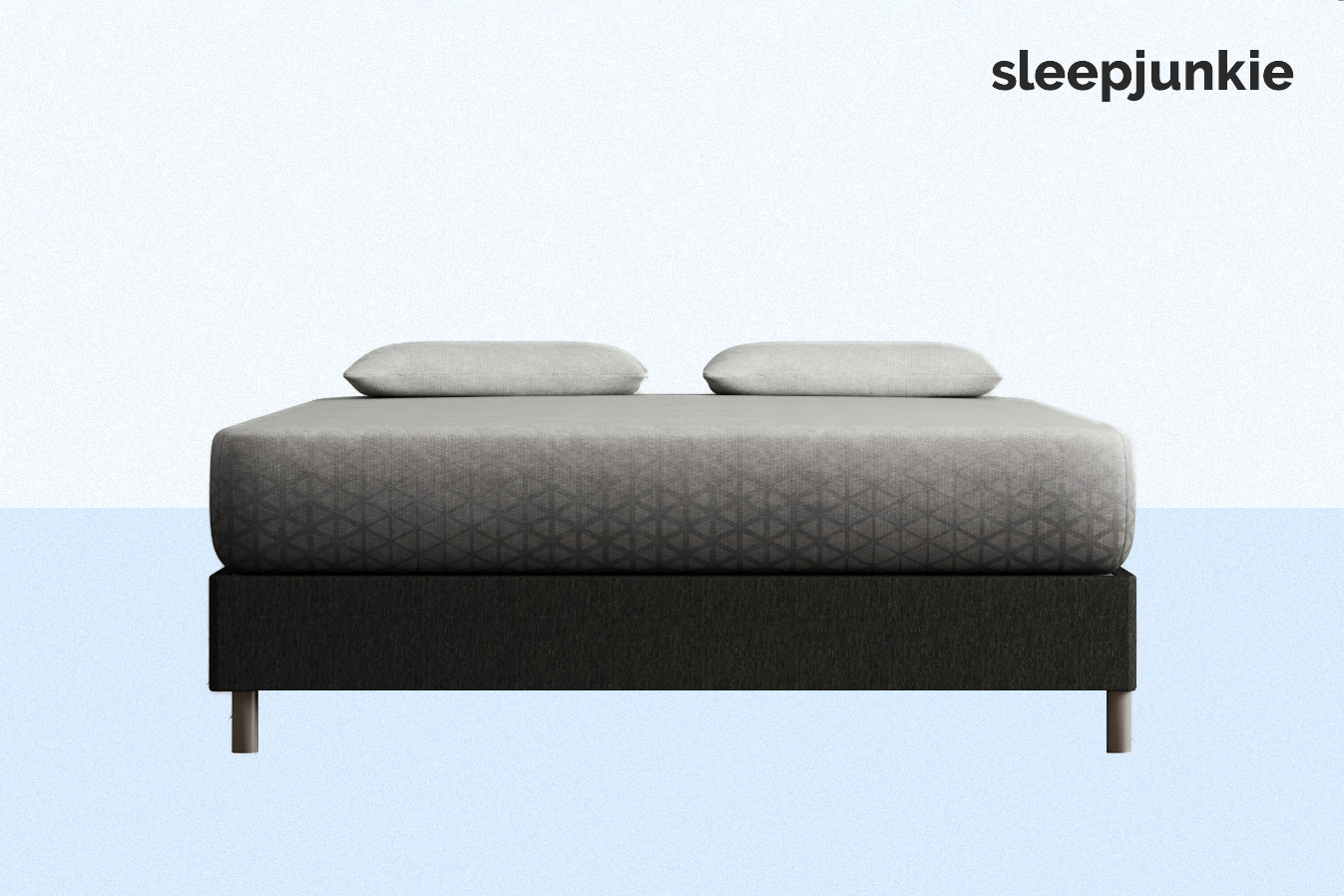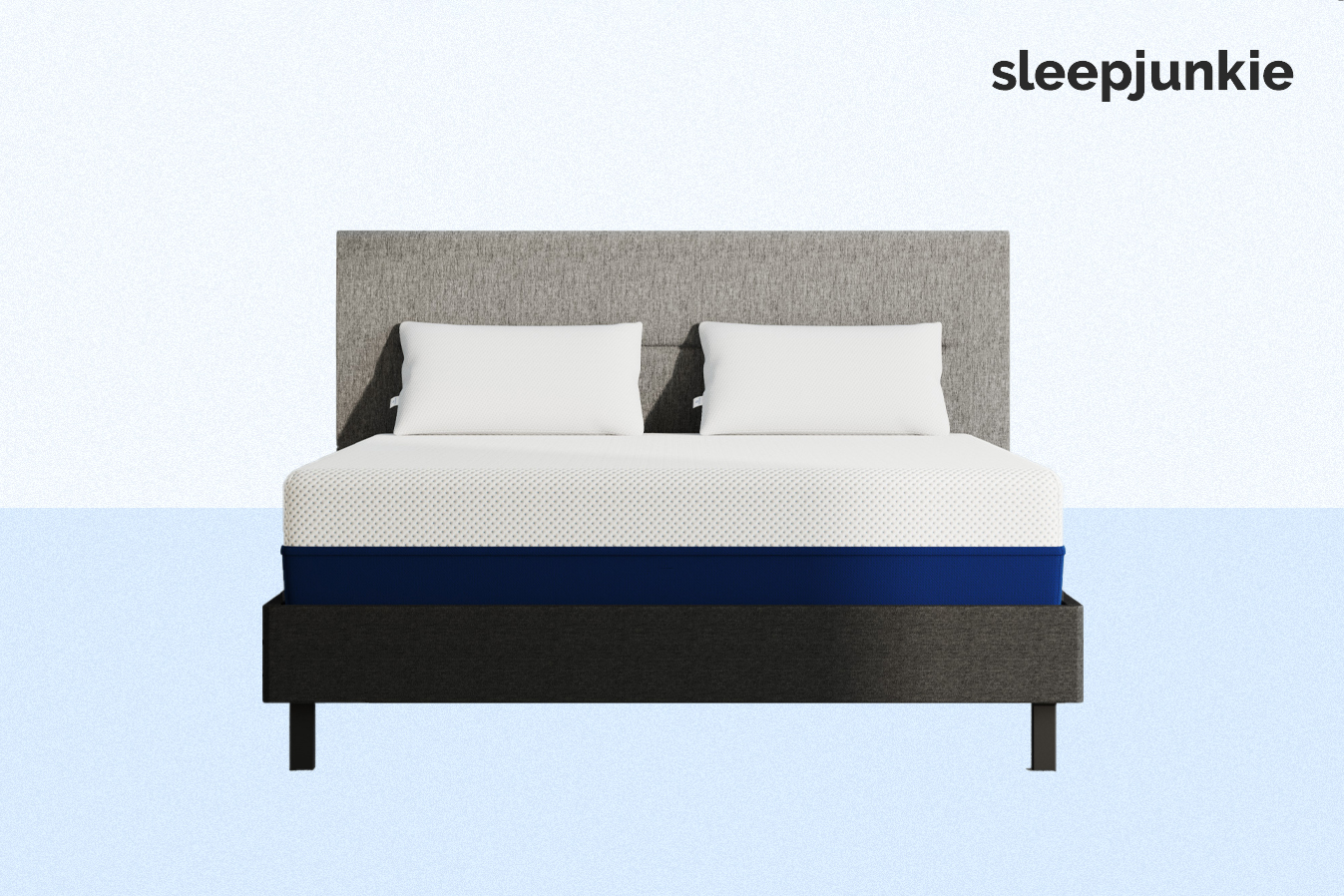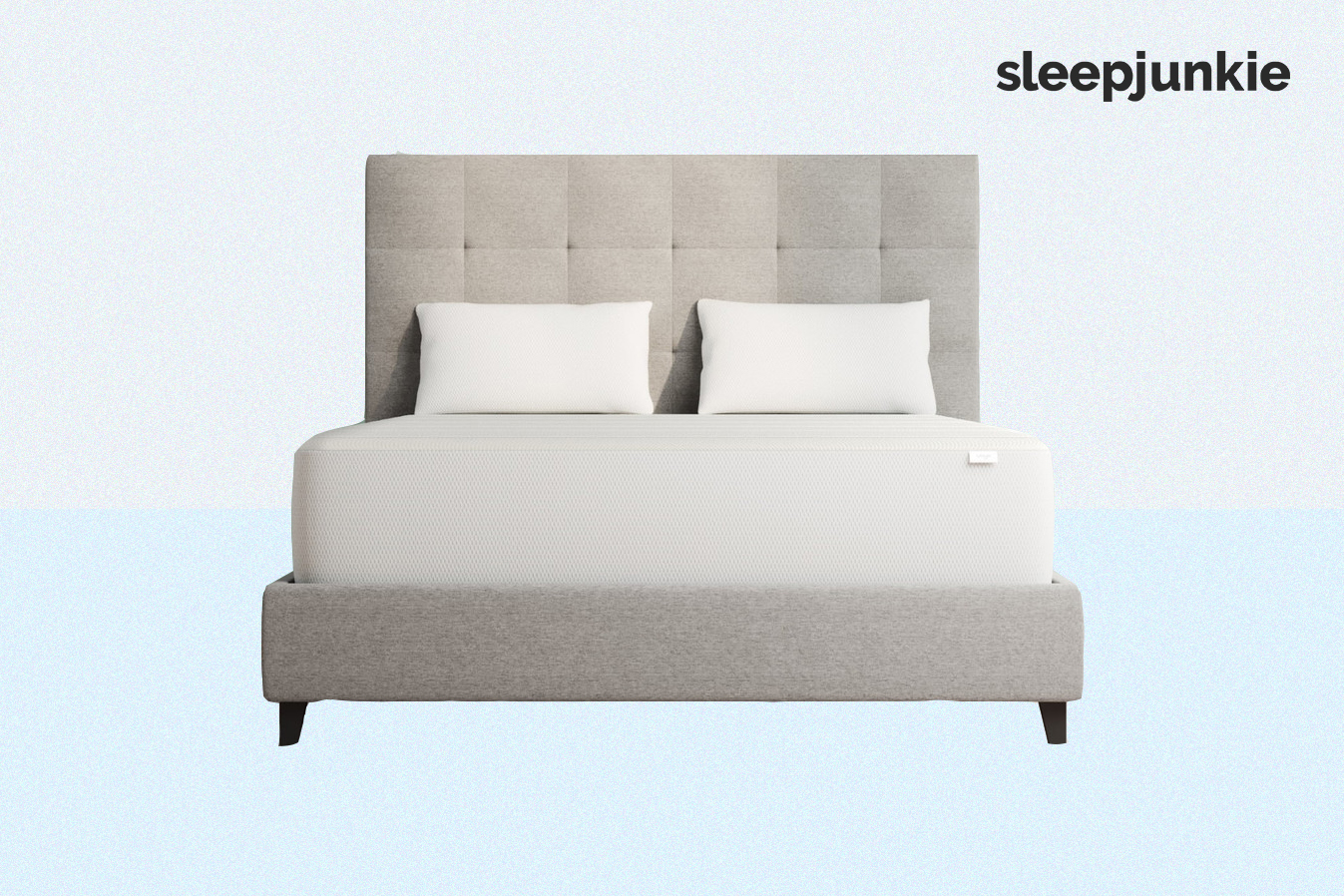Do Lucid Mattresses Have Fiberglass?

Are you considering purchasing a Lucid mattress but wondering if it contains fiberglass? Then you’ve come to the right place.
Product safety laws are in place to help protect consumers from potential health risks associated with certain materials used in mattress making. However, shoppers should still do their research before investing in a new mattress to ensure that they’re buying something that meets their needs while providing optimal safety and comfort each night.
In this article, we will explain what fiberglass is and why it’s used in mattresses. We’ll also discuss the potential risks associated with fiberglass exposure and how to protect yourself from them. So keep reading for all the info you need on Lucid mattresses and fiberglass!
Best Mattresses Without Fiberglass
What is a Lucid Mattress?
You may be wondering what a Lucid mattress is and if it’s worth considering for your next purchase. Technically, speaking, there are several different Lucid mattresses to choose from. The mattress brand is known for producing low-cost innerspring and memory foam mattresses that come in various sizes, materials, and firmness levels.
For example, their 12-Inch Gel Memory Foam Mattress features a three-layer comfort system with a gel memory foam top layer and high-density foam support core. All of their mattresses, whether innerspring or memory foam mattresses, are claimed to be made from harmless materials without the specific mention of fiberglass. However, some customers report finding fiberglass in their mattress after they purchase it.
Why is this worth noting? Fiberglass is often used by mattress makers as a fire retardant because it is efficient and affordable. But it can cause skin irritations and breathing problems if the cover fabric is removed or wears down.
What Materials Are Used in Lucid Mattresses?
Lucid mattresses come in two types: memory foam and innerspring. Memory foam and innerspring mattresses have a gel memory foam top layer and high-density foam support layer to give the mattress its firmness. The 12-Inch Gel Memory Foam Mattress has a three-layer comfort system and support core that Lucid fails to mention fiberglass on its website. However, some customers report their mattress labels do mention it after purchase.
Fiberglass is often used as a fire retardant by mattress manufacturers to meet federal requirements, but it can cause skin irritation or breathing problems when exposed. It is popular among mattress makers because it is efficient and affordable but can be difficult to clean up fiberglass once the particles escape into the air or bedding.
When looking for a safe mattress option that does not contain potential health risks such as fiberglass, shoppers should check the label on the mattress before purchasing or researching customer reviews online. Holes in the cover or missing labels could indicate potential leaks of these particles into your sleeping environment.
What is Fiberglass?
Fiberglass is a type of material made from glass fibers, which are extremely thin strands of glass. It is commonly used as a fire retardant in certain memory foam mattresses, including those produced by Lucid. Even if the mattress label doesn’t specify that no fiberglass is used, there may still be some present.
Fiberglass is also commonly used in the home for insulation purposes, providing thermal resistance and reducing energy consumption. It is also used in walls, ceilings, and attics to enhance soundproofing and to reinforce structures in the form of fiberglass-reinforced panels or FRPs.
Do you have a fiberglass mattress? It’s important to check for holes or missing labels on the mattress cover that could indicate potential fiberglass leaks. Fiberglass particles can cause skin irritation and breathing problems if exposed, so it’s best to avoid them if possible. Natural flame retardants such as wool or plant fibers are good alternatives to fiberglass in mattresses.
Why Would A Mattress Have Fiberglass?
Uncovering why mattresses might contain fiberglass can be an eye-opening experience, as its presence is usually hidden beneath layers of comfort and protection. In order to meet federal regulations about mattress flammability and how long a model must resist an open flame, many mattress companies use fiberglass as a cheap fire barrier.
This includes popular brands like Lucid, Nectar, and Ashley Furniture, among others. Fiberglass is used in mattresses because it’s efficient and affordable, but it can cause skin irritations and breathing problems if exposed.
To meet government standards for flammability tests, manufacturers will often line mattresses with a fire-retardant sock made from fiberglass fibers. The sock helps protect against fire hazards but may lead to fiberglass contamination if not properly sealed or maintained.
How is Fiberglass Used in Mattresses?
Fiberglass is commonly used in mattress manufacturing as a fire retardant, but it can cause skin irritation and breathing problems if exposed. It is often referred to as ‘glass fiber’, ‘glass-reinforced plastic’, or ‘glass wool’ in bedding accessories.
Some of the more common ways you can be exposed to fiberglass are through lower-cost brands and sleep accessories, such as Zinus mattresses. Customers have expressed concerns about the use of fiberglass in their budget mattresses due to their lower price points.
Zinus mattresses are manufactured in China, raising questions about quality control standards and safety compliance. A proposed class action lawsuit even suggested that Zinus mattresses were defective for the ways that fiberglass could easily seep through the cover.
Lucid mattresses have not been subject to a lawsuit regarding fiberglass contamination, although some customers have reported finding fiberglass in their beds. Reviews on Reddit and Amazon suggest that this mattress may contain fiberglass with a fireproof coating. These fiberglass particles can escape through the cover, according to some users.
To protect yourself from potential exposure to fiberglass, read reviews carefully before buying a new mattress and look for signs of wear on your current one, such as holes or missing labels on the cover. Investing in an organic or eco-friendly mattress made with natural fire retardants like wool can help avoid these risks altogether. With a bit of research, you can enjoy a high-quality yet affordable option that is free of synthetic fibers like fiberglass.
How Can I Protect Myself from Potential Health Risks?
With the potential risks of fiberglass in mattresses, it’s important to take necessary precautions when choosing a mattress to ensure your safety. When it comes to Lucid mattresses specifically, there are some concerns about the presence of fiberglass within them. It is important to be aware of this potential risk and understand how best to protect yourself from it.
Fiberglass is often used as an insulating material in mattresses because it is lightweight and helps build thermal barriers between body weight and comfort layers. Inhaling or coming into contact with these fibers can cause skin irritations and rashes such as an itchy rash or long-term breathing problems if exposed over time.
If you’re concerned about potentially being exposed to fiberglass particles while sleeping, consider opting for an alternative mattress that does not contain any fiberglass at all. Natural or organic latex mattresses are typically free from any type of synthetic fire or flame retardant, such as fiberglass, making them an ideal choice for those who want peace of mind when shopping for a new mattress.
You don’t need to necessarily pick out a non memory foam mattress to avoid fiberglass, though. If you enjoy the material, there are plenty of memory foam mattresses free of fiberglass.
It’s also worth researching other brands that contain fiberglass in their products, such as Zinus, Nectar, or Linenspa before purchasing anything else online. Here’s a list of some of our investigations into popular mattress brands, answering the question of whether or not they used fiberglass:
Checking reviews and labels can help identify any potential issues with the product before purchase.
To further protect yourself against exposure risks from a Lucid mattress (or any other brand), make sure you use appropriate bedding covers on top and keep your old one on until you’re ready to replace it. Never remove an existing cover without replacing it immediately, as this will release harmful particles into your bedroom environment!
If you find signs of holes in the mattress cover or missing labels, then this could indicate possible leaks from the inner materials, which could contain dangerous fibers like fiberglass.
Are There Alternatives to Fiberglass Mattresses?
You may be wondering if there are alternatives to mattresses with fiberglass, and the answer is yes. Many mattress makers use fiberglass as a fire retardant to meet federal requirements. However, there are other fire-resistant materials, available for those looking for a safer sleep environment. Eco-friendly or organic mattresses use natural fire retardants instead of potentially hazardous materials like fiberglass.
Memory foam mattresses may also contain silica instead of the traditional thermal barriers found in conventional mattresses. Natural or organic mattresses with latex are usually free of any type of fiberglass and provide excellent support while still meeting all fire safety standards. They may instead use natural fire retardants such as wool or plant fibers, so these can be considered too.
Shoppers considering a vegan mattress without wool can also look for materials such as graphite or kevlar.
Choosing a Mattress Without Fiberglass
When shopping for a new mattress, it’s important to do your research on mattresses without fiberglass. Read reviews from reliable sources before making your purchase decision. Checking the mattress label and researching reputable reviews can help you avoid any potential issues with hazardous materials like fiberglass in a Lucid bed.
It’s also important to pick a mattress with a sleep trial when shopping. Worst case, if you find out after the mattress is delivered that it has fiberglass, then you have a way to return it.
Using waterproof mattress protectors can guard against any possible exposure to these particles. They not only keep water and allergens out, but the extra barrier traps fiberglass that could cause skin irritations or breathing problems if inhaled.
Frequently Asked Questions
Can fiberglass escape from a mattress?
Yes, it can, and very easily. Fiberglass pieces can escape from mattress covers by opening, through tears, or even removing the label and entering the air, posing a risk for inhalation and causing skin and eye irritation. Additionally, washing mattress covers may cause fiberglass shards to fly out, worsening respiratory problems and resulting in itching skin.
How can you tell if a mattress is fiberglass?
Look for a percentage of “glass fiber” indicated as a material on the mattress label. The labeling should also clearly state that fiberglass particles can be expelled and exposed to the air if the cover is ever removed. Also be leery of ‘greenwashing’ terms such as glass wool, glass reinforced plastic and filigree glass.
How do you protect yourself from fiberglass in a mattress?
It would be advisable to use a premium waterproof mattress protector to cover your mattress. Never take the cover off a mattress because it contains a fiberglass layer that serves as a fire retardant. You run the danger of releasing the same fiberglass material if you remove it.
How can you tell if fiberglass is in the air?
Inhaling fibers may cause soreness in the nose and throat. Fiberglass dust exposure can make asthma and bronchitis worse. If fibers are swallowed, a brief stomach ache may result.
Can an air purifier remove fiberglass in the air?
Fiberglass in the air can be diminished but not entirely removed by air purifiers. Most filters are unable to capture the tiny fiberglass particles, and it is impossible to remove any that have already gotten embedded in the walls or furniture with an air purifier. Completely eliminating fiberglass is a long and costly process and often requires paying a professional cleaning service to finish the job.
Conclusion
You might be concerned about fiberglass contamination in Lucid mattresses, but there are ways to protect yourself if you already own one. A quality mattress protector can help you buy some time until you’re ready to replace the mattress.
Then when you’re ready, research reviews and product safety laws before making a mattress purchase. Look for mattress brands that offer fiberglass-free options. Lastly, visualize your ideal mattress by using the information provided in this article. It could help you make an informed decision and find a mattress that’s safe for you.
Safety should always be taken into consideration when purchasing a mattress so checking the label carefully as well as researching reviews can help avoid any potential contamination from fiberglass particles escaping through the cover, holes in the mattress cover, or missing labels which can indicate this has happened already.



